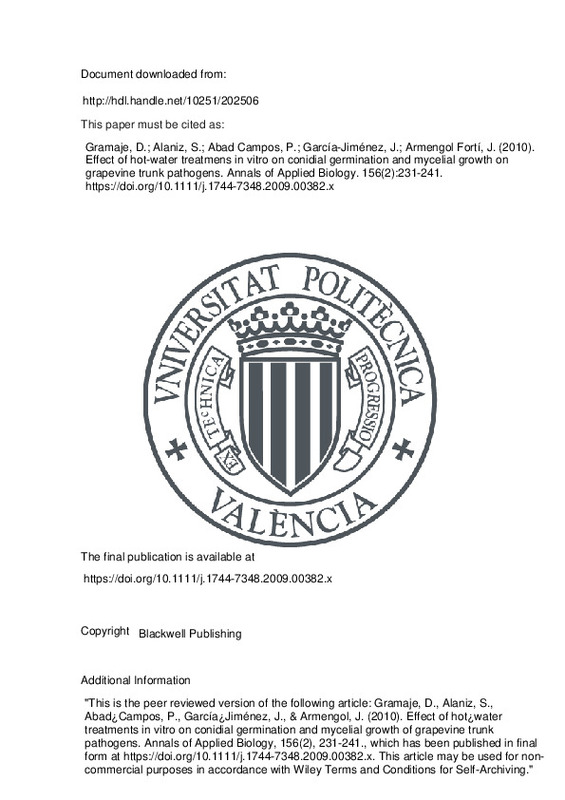JavaScript is disabled for your browser. Some features of this site may not work without it.
Buscar en RiuNet
Listar
Mi cuenta
Estadísticas
Ayuda RiuNet
Admin. UPV
Effect of hot-water treatmens in vitro on conidial germination and mycelial growth on grapevine trunk pathogens
Mostrar el registro completo del ítem
Gramaje, D.; Alaniz, S.; Abad Campos, P.; García-Jiménez, J.; Armengol Fortí, J. (2010). Effect of hot-water treatmens in vitro on conidial germination and mycelial growth on grapevine trunk pathogens. Annals of Applied Biology. 156(2):231-241. https://doi.org/10.1111/j.1744-7348.2009.00382.x
Por favor, use este identificador para citar o enlazar este ítem: http://hdl.handle.net/10251/202506
Ficheros en el ítem
Metadatos del ítem
| Título: | Effect of hot-water treatmens in vitro on conidial germination and mycelial growth on grapevine trunk pathogens | |
| Autor: | Gramaje, D. Alaniz, S. García-Jiménez, J. | |
| Entidad UPV: |
|
|
| Fecha difusión: |
|
|
| Resumen: |
[EN] In this study, the sensitivity of Cadophora luteo-olivacea, Cylindrocarpon liriodendri, Cn. macrodidymum and eight species of the genus Phaeoacremonium to hot-water treatments (HWTs) in vitro was evaluated. Conidial ...[+]
|
|
| Palabras clave: |
|
|
| Derechos de uso: | Reserva de todos los derechos | |
| Fuente: |
|
|
| DOI: |
|
|
| Editorial: |
|
|
| Versión del editor: | https://doi.org/10.1111/j.1744-7348.2009.00382.x | |
| Código del Proyecto: |
|
|
| Descripción: |
|
|
| Agradecimientos: |
This research was financially supported by the Projects AGL2006-11884-C04-01 (Ministerio de Educacion y Ciencia, Spain) and TRT2006-00033-00-0 and RTA2007-00023-C04-03 (Programa Nacional de Recursos y Tecnologias Agrarias, ...[+]
|
|
| Tipo: |
|







![[Cerrado]](/themes/UPV/images/candado.png)


